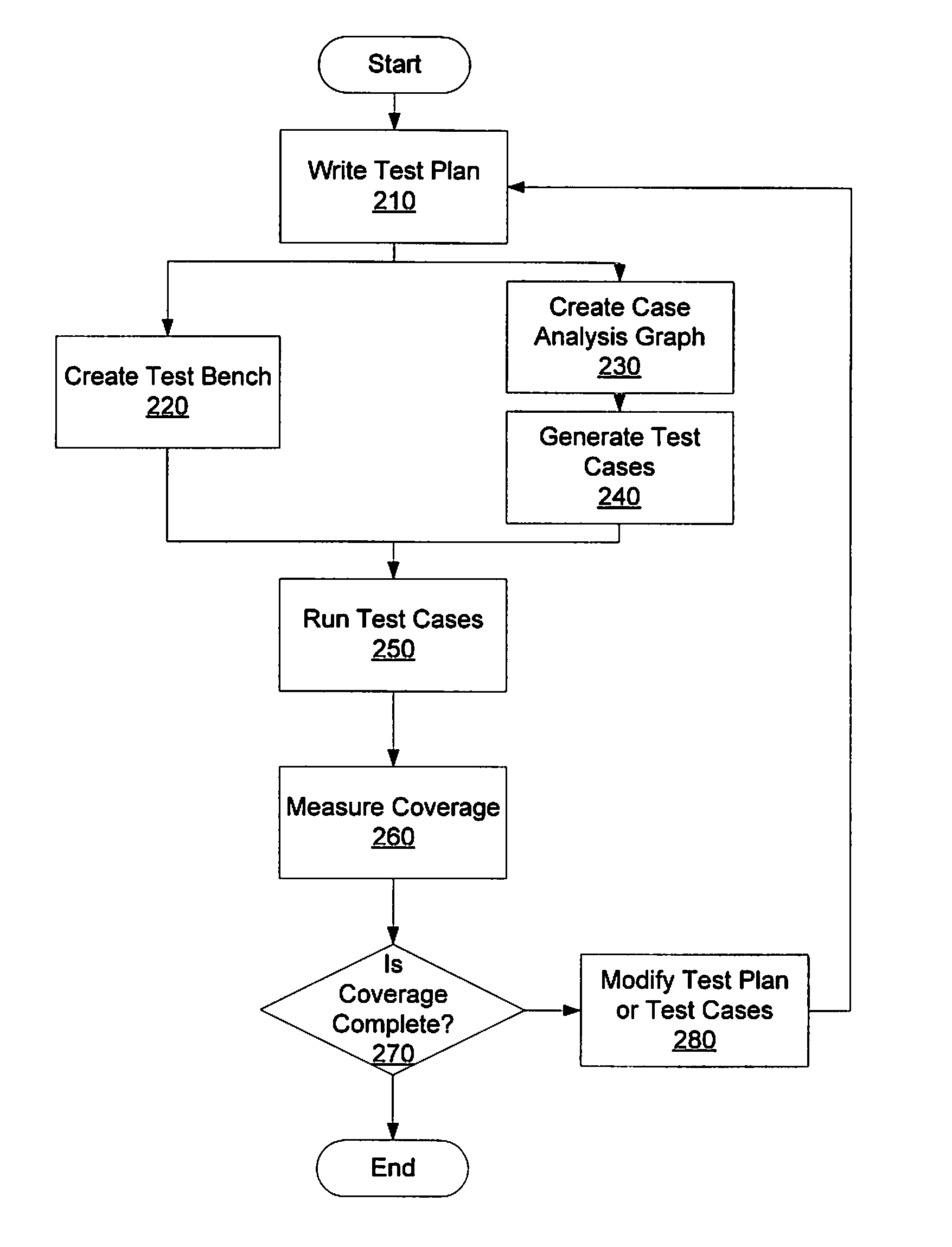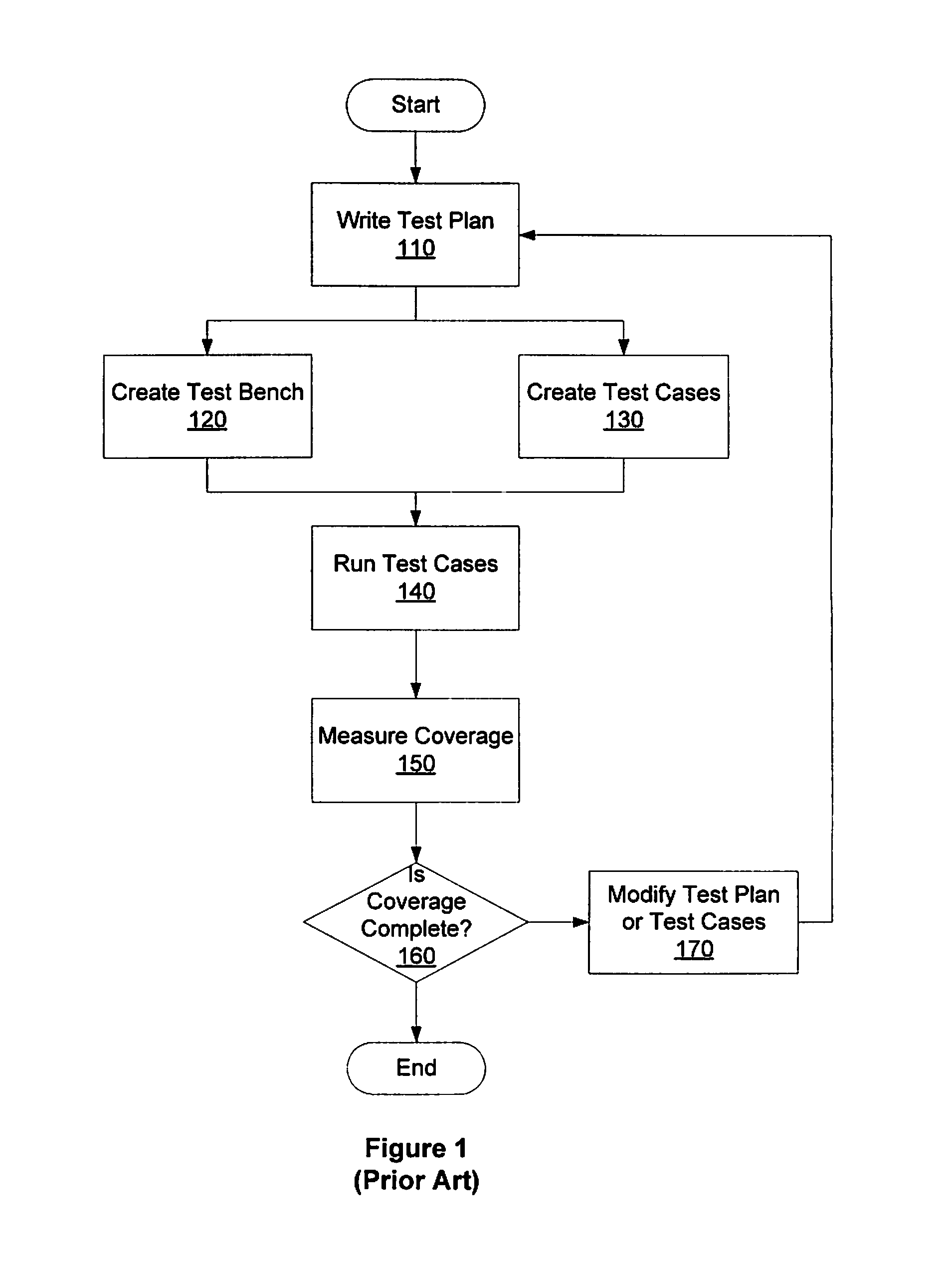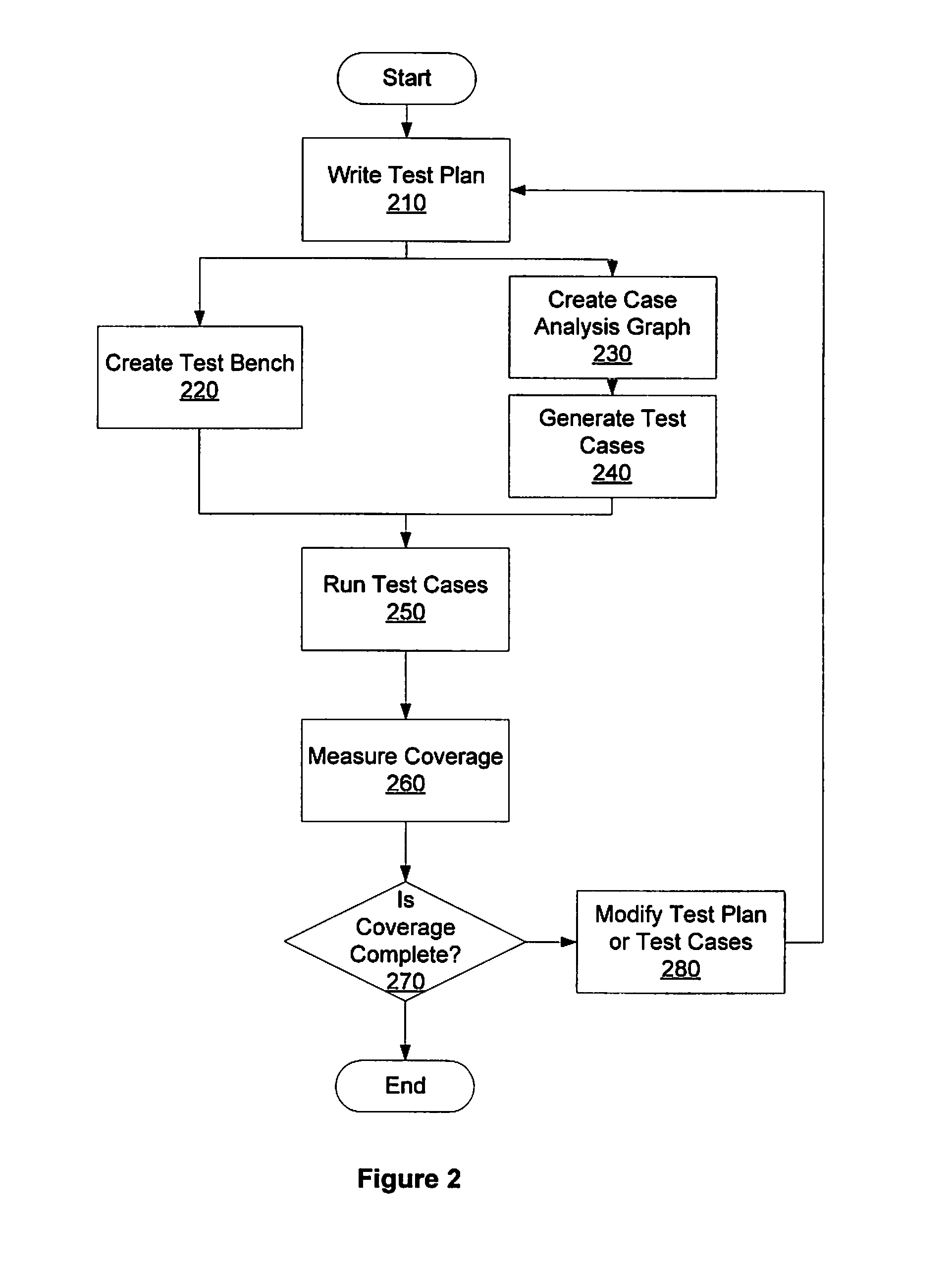Generating self-checking test cases from reduced case analysis graphs
a graph and graph technology, applied in the field of design under test testing, can solve the problems of double-expanding growth rate of verification complexity, exponential growth of verification complexity, and exponential growth of complexity of functional testing or verifying digital systems
- Summary
- Abstract
- Description
- Claims
- Application Information
AI Technical Summary
Problems solved by technology
Method used
Image
Examples
Embodiment Construction
[0024]The present invention provides a method, system and apparatus for constructing a comprehensive test plan using a case analysis graph. Embodiments of the present invention further provide for automatically generating test cases from a case analysis graph and for measuring functional coverage of the test cases. Additional embodiments of the present invention provide for visualizing both the comprehensive test plan and functional coverage data.
Typical Verification Process
[0025]FIG. 1 is a simplified flow diagram illustrating a typical prior art process followed in functional verification. Initially, a test plan is written to define the scenarios to be tested for a design under test (110). A test bench is developed that allows test cases to be exercised on the design under test (120). Test cases are created to test each of the scenarios defined in the test plan (130). Each test case is directed toward a scenario of interest and should predict an expected result. Each test case is ...
PUM
 Login to View More
Login to View More Abstract
Description
Claims
Application Information
 Login to View More
Login to View More - R&D
- Intellectual Property
- Life Sciences
- Materials
- Tech Scout
- Unparalleled Data Quality
- Higher Quality Content
- 60% Fewer Hallucinations
Browse by: Latest US Patents, China's latest patents, Technical Efficacy Thesaurus, Application Domain, Technology Topic, Popular Technical Reports.
© 2025 PatSnap. All rights reserved.Legal|Privacy policy|Modern Slavery Act Transparency Statement|Sitemap|About US| Contact US: help@patsnap.com



